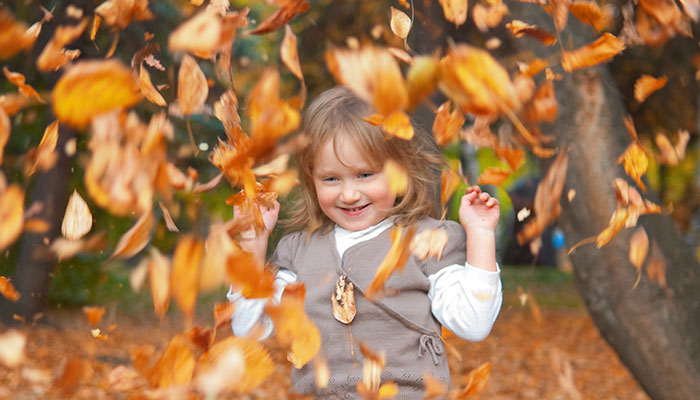While we believe that the books and resources recommended may be of value to you, keep in mind that these are suggestions only and you must do your own due diligence to determine whether the materials are appropriate and suitable for your use. PNC has no sponsorship or endorsement agreement with the authors or publishers of the materials listed.
FALL

Large, Leafy Tree
Children will learn about trees in the fall.

Lesson Objective
The children will explore the parts of a tree, and create a class tree with a trunk, branches, and leaves.
Science
What You'll Need
- A variety of colorful leaves – 6 per child
- Paintbrushes – 1 per child
- A long piece of brown paper – about 6 feet long
- White construction paper – 1 per child
- Brown tempera paint – 1 bottle
- Glue sticks – 1 per 2 children
- Pencils – 1 per adult
- Paper plates – 1 per child (for paint)
What To Do
- Collect a variety of leaves from outside. You can do this with the children or collect them yourself before the day of the lesson. If you do not have access to leaves, have the children make them from paper.
- Compare the leaves and their colors, and discuss where they came from (see Did You Know?).
- Discuss the parts of a tree (see Did You Know?).
- Let the children watch as you draw a large tree trunk on the long piece of brown paper.
- Distribute 1 sheet of white construction paper to each child.
- Trace the palm of their hand, their fingers, and their arm (up to the elbow) on their paper.
- Distribute paint and paintbrushes.
- Have the children paint the tracings of their arms. These will become branches on the large tree.
- After each child finishes painting, let him/her select some leaves from your collection.
- Distribute the glue, and let the children glue the leaves around the branch that they made.
- When the projects are completely dry, carefully cut the excess paper from around the “branches” that the children made.
- Hang the large tree trunk drawing on a wall, and add the branches to the tree.
Resources
Home School Resources
Home educators: use these printable lesson PDFs to teach this lesson to your home schoolers. They're available in English and Spanish.
Content Provided By
Common Core State Standards Initiative – These lessons are aligned with the Common Core State Standards ("CCSS"). The CCSS provide a consistent, clear understanding of the concepts and skills children are expected to learn and guide teachers to provide their students with opportunities to gain these important skills and foundational knowledge [1]. Visit the CCSS


